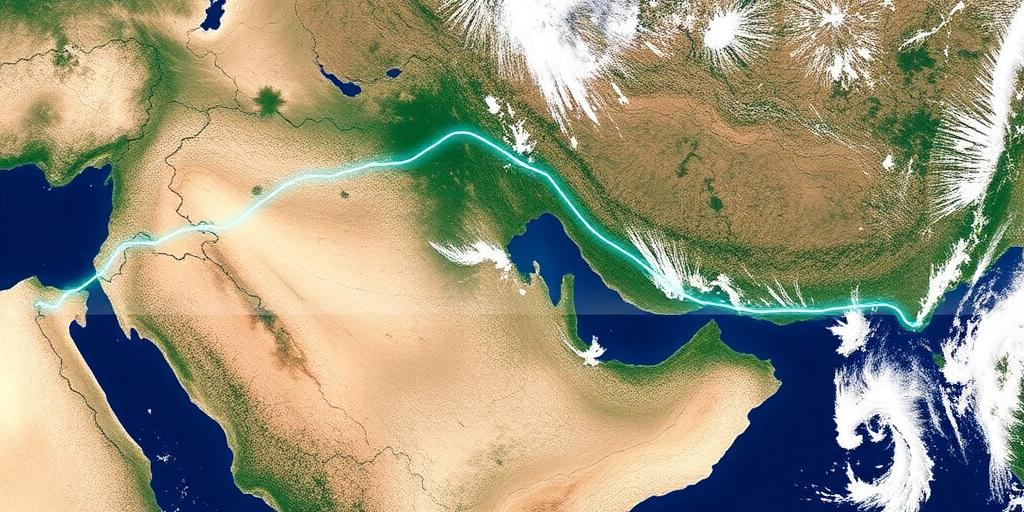The Future of Peaceful Border Demarcation
Border demarcation, the process of defining and marking boundaries between countries or regions, is a critical aspect of international relations. Historically fraught with conflict, the future of border demarcation increasingly relies on peaceful and cooperative approaches. This article explores emerging trends, technologies, and strategies that promise to foster peaceful border demarcation in the years to come.
The Shift Towards Peaceful Strategies
Traditional methods of border demarcation often involved unilateral actions, military presence, and sometimes violent confrontations. However, a growing recognition of the importance of diplomacy, negotiation, and international law is driving a shift toward peaceful strategies. This evolution is underpinned by several factors:
- International Cooperation: Increased collaboration among nations through organizations like the United Nations and regional bodies provides platforms for dialogue and mediation.
- Legal Frameworks: The establishment of clear legal frameworks and adherence to international treaties offer a structured approach to resolving border disputes.
- Economic Interdependence: As countries become more economically interconnected, the incentive to maintain peaceful relations, including clearly defined borders, grows stronger.
Technological Advancements in Border Demarcation
Technology plays a pivotal role in modern border demarcation, offering tools for precise mapping, monitoring, and management. These advancements not only enhance accuracy but also promote transparency and reduce the potential for misunderstandings. Key technologies include:
- Satellite Imagery and GPS: High-resolution satellite imagery combined with GPS technology allows for accurate mapping of border regions, even in remote or inaccessible areas.
- Geographic Information Systems (GIS): GIS integrates spatial data, enabling comprehensive analysis and visualization of border areas. This helps in identifying potential issues and planning effective demarcation strategies.
- Remote Sensing: Technologies like LiDAR (Light Detection and Ranging) and aerial photography provide detailed topographic data, aiding in the precise definition of border boundaries.
Strategies for Peaceful Border Demarcation
Beyond technology, effective strategies are essential for ensuring peaceful border demarcation. These strategies focus on building trust, fostering cooperation, and addressing the needs of local communities.
- Joint Demarcation Commissions: Establishing joint commissions composed of representatives from neighboring countries can facilitate collaborative decision-making and conflict resolution.
- Community Engagement: Involving local communities in the demarcation process ensures that their concerns and interests are considered, promoting acceptance and reducing potential conflicts.
- Transboundary Conservation: Creating protected areas that span across borders can foster cooperation in managing natural resources and promoting biodiversity conservation. This approach transforms borders from barriers into shared spaces.
Case Studies in Peaceful Border Demarcation
Several successful examples of peaceful border demarcation highlight the effectiveness of these strategies and technologies:
- The European Union: The Schengen Area, while not a border demarcation in the traditional sense, represents a successful model of borderless cooperation among member states, promoting peace and economic integration.
- Costa Rica and Panama: These countries have successfully used joint commissions and community engagement to resolve border disputes and promote sustainable development in border regions.
- Nepal and India: Despite some challenges, these countries have made significant progress in demarcating their shared border through diplomatic negotiations and technological assistance.
Challenges and Future Directions
Despite the advancements in technology and strategies, challenges remain in achieving peaceful border demarcation. These include political instability, conflicting territorial claims, and limited resources. To overcome these challenges, future efforts should focus on:
- Strengthening International Norms: Reinforcing the principles of international law and promoting adherence to peaceful dispute resolution mechanisms.
- Investing in Capacity Building: Providing training and resources to countries engaged in border demarcation to enhance their technical and diplomatic capabilities.
- Promoting Regional Cooperation: Encouraging regional organizations to play a more active role in facilitating border demarcation and conflict resolution.
Conclusion
The future of peaceful border demarcation lies in the integration of advanced technologies, collaborative strategies, and a commitment to international cooperation. By embracing these approaches, nations can transform borders from potential sources of conflict into bridges for peace and sustainable development. As the world becomes increasingly interconnected, the importance of peaceful border demarcation will only continue to grow, shaping a more stable and prosperous future for all.









